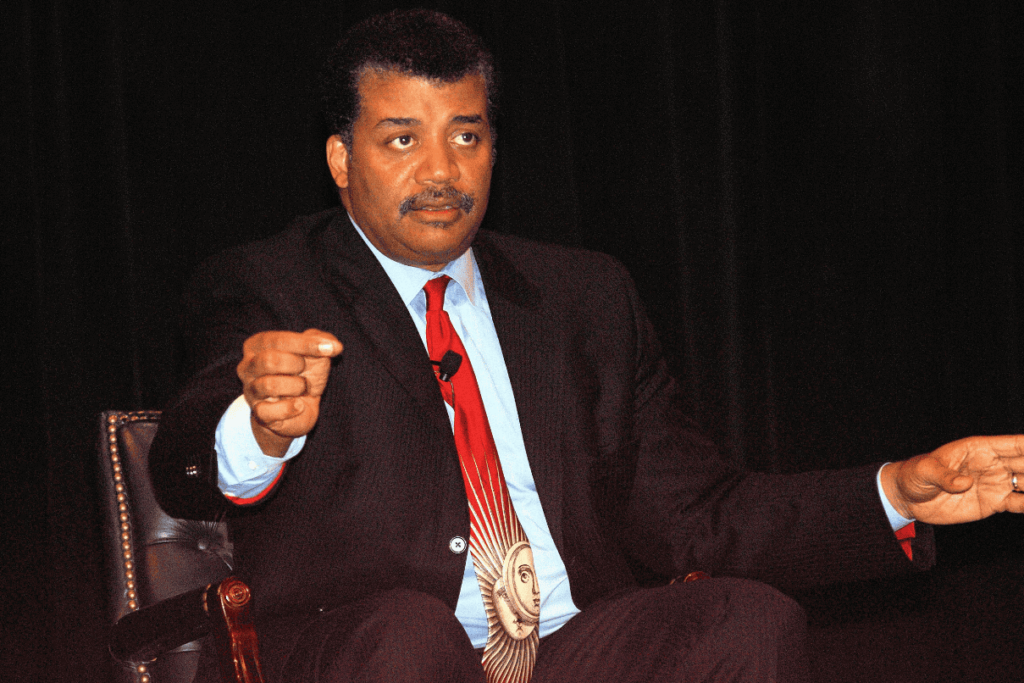Astrophysicist Neil deGrasse Tyson has warned about an asteroid that could hit Earth in 2032. The asteroid, called 2024 YR4, is large enough to cause massive damage. Tyson’s warning comes as scientists track the asteroid, and the chance of it hitting Earth grows.
The Size of the Threat
Asteroid 2024 YR4 was first spotted by scientists late last year. It is huge, ranging from 130 to 300 feet across. This is about the size of a mansion. NASA now estimates the asteroid has a 2.3% chance of striking Earth on December 22, 2032. This is nearly double the odds from when it was first discovered. The asteroid’s growing chances of hitting Earth are causing concern.
Tyson used social media to highlight the need for more funding for space programs. He said, “At the moment, mansion-sized Asteroid 2024-YR4 has a one-in-fifty chance of hitting Earth in the next eight years. Now might be a bad time to reduce spending on Science. Just sayin.” This is a call to keep funding space research to protect the Earth.
The Potential Impact of the Asteroid
If the asteroid hits Earth, the explosion would be huge. Experts say it would be like 7.7 megatons of TNT exploding. That’s 500 times more powerful than the atomic bombs dropped on Hiroshima and Nagasaki. The blast would level cities, causing massive damage. Even though the chance of the asteroid hitting Earth is still low, it could be a disaster. The asteroid is being closely watched by scientists to plan for possible defenses.
Why Funding Science Is Important
Tyson’s warning also highlights a serious issue. The U.S. government recently froze funding for scientific research. The National Science Foundation (NSF), which funds a lot of space research, was affected. The freeze was due to an executive order from President Trump. While the freeze was temporarily lifted by a judge, the NSF still faces cuts. If space research programs lose funding, it could delay plans to protect the Earth from asteroids.
NASA’s Efforts to Protect the Earth
NASA is already working on ways to protect Earth from asteroids. In 2022, NASA carried out the Double Asteroid Redirection Test (DART). This mission tested a method to change the path of an asteroid. NASA crashed a spacecraft into an asteroid to see if it could change its direction. This could be useful in the future if an asteroid is on a collision course with Earth.
Chris Hadfield, a former astronaut, explained the importance of such missions. He said, “If you [hit] it early enough, then a tiny angular change will cause it to miss the Earth. At least we know that we’re capable of saving the Earth.” NASA’s work gives hope that we can prevent an asteroid from hitting our planet.
What If the Asteroid Hits?
The risk of asteroid 2024 YR4 hitting Earth remains low, but scientists take it seriously. If the asteroid strikes, it could cause a massive explosion. The damage would be widespread, with cities flattened and fires igniting. The shockwaves could spread for miles, and the explosion would send debris into the atmosphere. This debris could block sunlight, causing a global cooling effect. Such an event would have serious consequences for the planet and its inhabitants.
Astronomers are keeping a close eye on the asteroid. They are watching its path to see if it poses a real threat. While the odds are still low, it’s better to be prepared. If the asteroid does hit, it could cause more damage than any natural disaster in recent history.
The Tunguska Event: A Reminder of the Danger
The 1908 Tunguska event in Siberia serves as a reminder of how dangerous asteroids can be. A large asteroid exploded over the region, flattening trees and causing widespread damage. The explosion was equal to 50 million tons of TNT. Though the impact occurred in a remote area, it showed how devastating an asteroid could be.
If 2024 YR4 hits Earth, the damage could be much worse. The asteroid is much larger than the one that caused the Tunguska event. If it breaks apart in the atmosphere, multiple cities could be hit. The impact would be disastrous.
The Need for Action
Tyson’s warning comes at a crucial time. Scientists are working hard to monitor asteroids and develop ways to defend against them. However, the lack of funding could slow down their efforts. It’s important to keep investing in space research to protect the Earth. The chance of asteroid 2024 YR4 hitting Earth may be small, but the consequences of a strike are too big to ignore.
The next few years are crucial. As scientists continue to track the asteroid, they will also need funding to develop ways to deflect it if necessary. If we are lucky, the asteroid will miss Earth. But if it doesn’t, we need to be ready.
For more information on this important topic and the latest in space research, visit New York Mirror.


